One of the best parts of Assassin’s Creed Valhalla does not take place in England. Where you go is a spoiler. It’s also one of the best parts of the game. We recently asked the people who made it to explain its origins.
The area in question is called Vinland and is on the northeastern coast of North America. A visit to the area changes the rules of the game. Vinland forces players to leave behind all their powerful weapons and gear, instead making them scrounge for basic supplies and weapons to complete their mission to take out a single, powerful target in a large, sparsely-populated wilderness.
By the way, the spoilers we’re about to get into aren’t just for Assassin’s Creed Valhalla but for another game in the franchise that involves North America, Assassin’s Creed III.
This area of the game, with its own large map, wildlife, and feel, stuck with me even after I finished it. It was a perfect platelet cleanser after spending most of the game in England killing, exploring, and conquering as a powerful Viking warrior. But I also wanted to know more about Vinland. How does a team, already working on a huge game like Valhalla, also build and create something as large and different as Vinland? Where does the idea for something like this come from? And how do you connect it back into the franchise’s labyrinthian lore? Ubisoft offered some surprising answers about Vinland’s development and production.
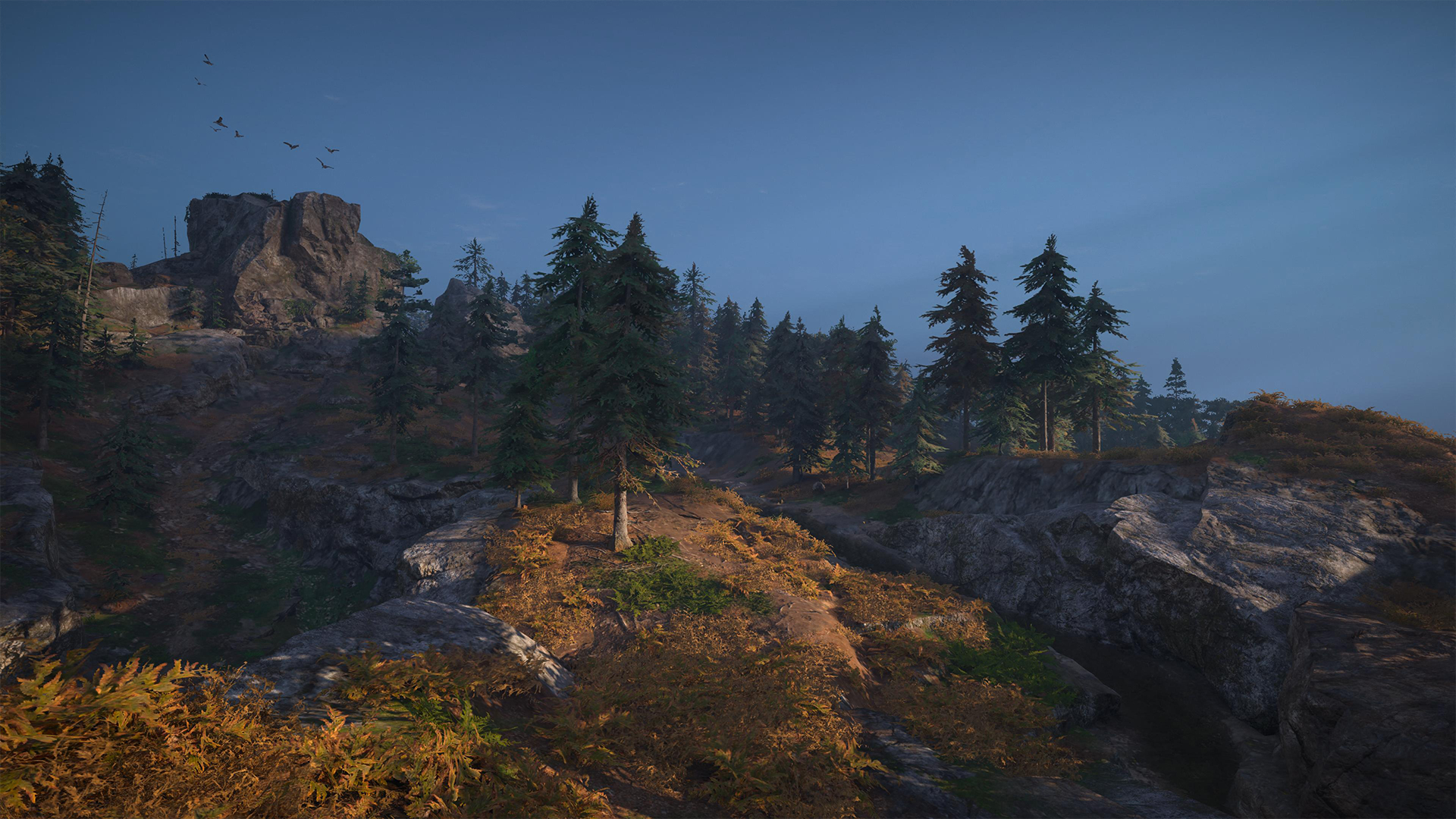
The initial idea for the region came from Ubisoft CEO Yves Guillemot, according to Darby MceDevitt, the narrative director on Valhalla. When the team at Ubisoft Montreal pitched the setting and theme of Valhalla, Guillemot pointed out that Vikings were among the first Europeans to visit North America and wondered if that would be an element of history that could be featured in the game. However, there was a problem. The Vikings in Valhalla wouldn’t set sail to America until 1000 AD, and Valhalla was set during the 870s. “As we thought about how that might fit into the historical timeline of Assassin’s Creed Valhalla, we realised that it could work really well – through the lens of the Assassins and Templars, the two groups in our game who always seem to be one step ahead of actual history,” explained McDevitt.
While the initial plan for Vinland came from pitch meetings early on in the game’s production, actual development on it wouldn’t start until much later, after the teams working on the game had a better understanding of the various systems and features. This allowed them to create something that felt different from what they had already been working on. The developers wanted Vinland to be a survival experience. “Taking one territory and delivering on that feeling of being ‘naked and afraid,’” is how level design director Philippe Bergeron put it. “Alone with your skills with a tough challenge to beat, you need to find your own way.”
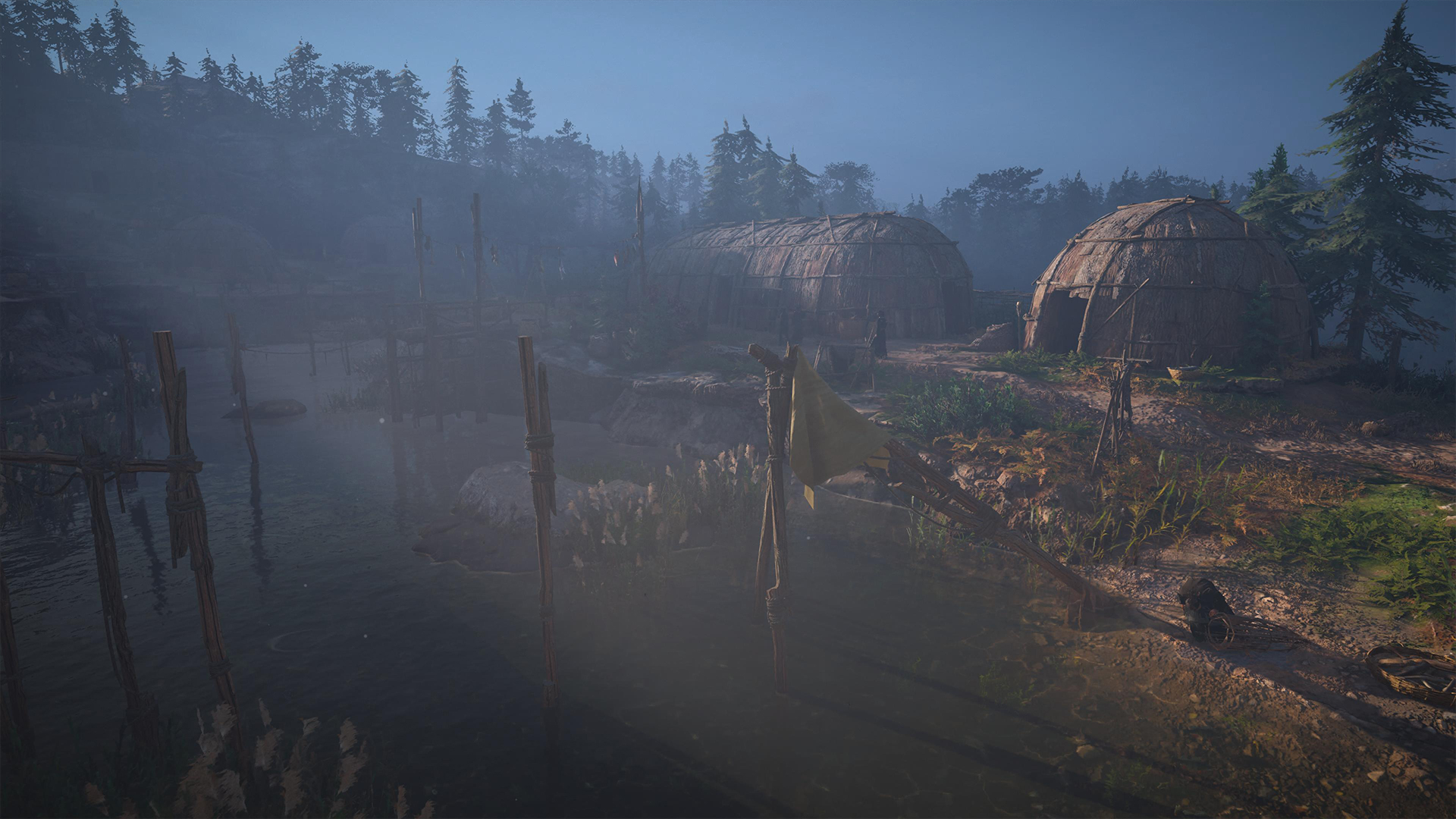
Vinland also allowed the team to create an in-game territory that would feature a single, important assassination target and let players figure out their own approach on a much larger scale than any other mission offered.
Building Vinland’s world was a challenge because of its setting, the wilderness of America, and how different it was from the rest of the game’s open fields, rolling hills, cities, and farms. This would require more original assets and art. Creating that much extra content would be tricky for a smaller studio, but Ubisoft was able to leverage one of its many other teams to help build the more nature-focused Vinland map.
“The team working on the region was from Ubisoft Singapore, who are Assassin’s Creed veterans,’’ said Rika Lim, lead level designer at Ubisoft Singapore. “Most of the people that were working on it have worked on at least two to three titles in the franchise.” Because players would be coming to Vinland with nothing but the shirt on their back and their skills they had earned, developers at Ubisoft Singapore built Vinland around the concept of stealth, allowing players to use more cautious tactics.
Ubisoft thought of Vinland as a “pace breaker,” something that would challenge players to survive without their regular gear, while allowing them to discover a brand new region and its native people. It’s the native people of Vinland, the Kanien’kehá:ka, that also led to Ubisoft designing the area of Vinland as a “one-off adventure,” something players visit for a few hours, then leave behind. The team didn’t want to alter history too much by allowing them to build a permanent settlement of Vikings in America 200 years before most historians believe Vikings first visited the continent. And they tried to avoid any friction between Eivor and the Native Americans who lived there. “We were also careful to not present Eivor as an antagonist or a saviour to the people of Vinland,” said McDevitt. “Eivor’s goal was always to track and defeat a single enemy.
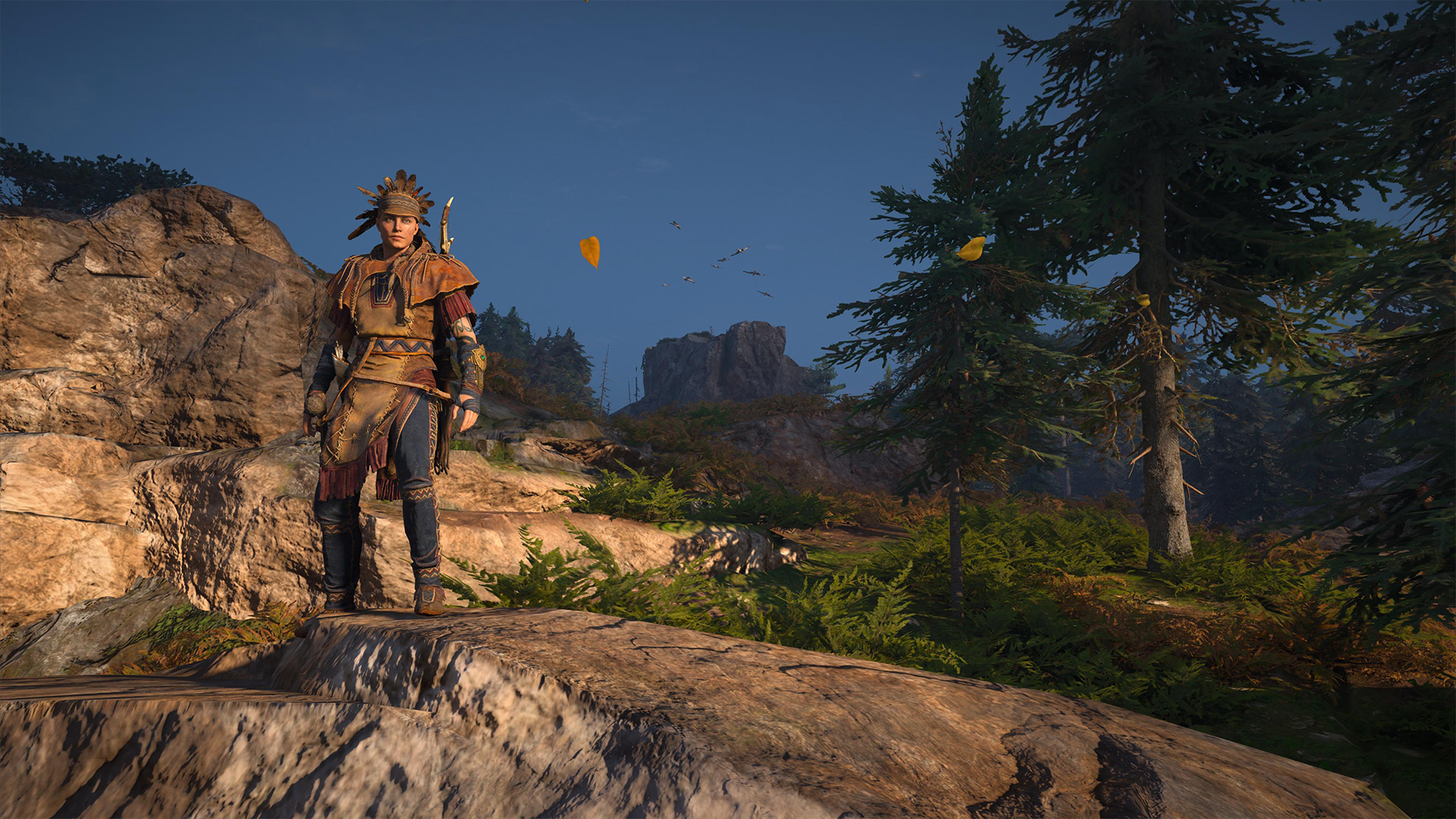
This desire to build Vinland as a one-off survival adventure also led to the decision to not allow players to take the gear they earned in Vinland with them when they left. Fans have asked about this since release, but that wouldn’t have worked with the team’s goal.
“Heading over to Vinland, we wanted that experience to feel like a self-contained survival loop,” said Bergeron.” For that to be true we had to start you fresh in that environment, stripped of your gear. Having the player leave the territory with that gear and upgrade it back home would have broken that experience, so that is why we ultimately decided on this structure.”
For longtime fans of Assassin’s Creed, this isn’t the first time the Kanien’kehá:ka people have appeared in the franchise. They play a big role in Assassin’s Creed III. One young man from the tribe, Ratonhnhaké:ton (also known as Conor,) is the main protagonist of that game. But this is a different time period. ACIII was set during the 1770s, over 900 years after the events of Assassin’s Creed Valhalla. Ubisoft wanted to make sure they presented an authentic and period-appropriate depiction of the tribe when Eivor arrived. To do that they reached out to Akwiratheka Martin, the same Kanien’kehá:ka language consultant who worked with Ubisoft on Assassin’s Creed III.
But there is a more tangible connection to Assassin’s Creed III in Valhalla’s Vinland section.
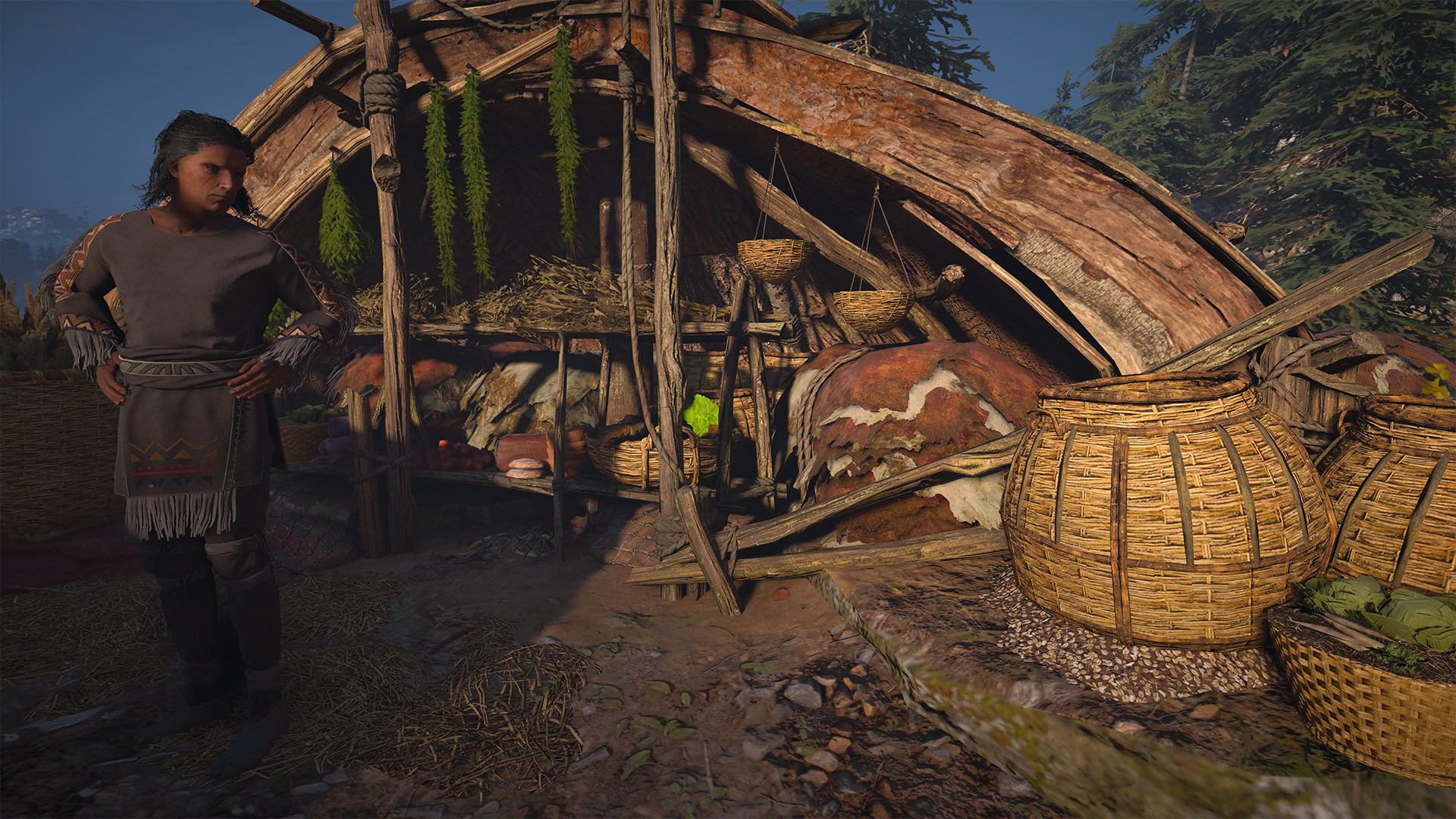
Eivor’s assassination target in Vinland is Gorm, a high-ranking member of the Order of The Ancients (aka the proto-Templars.) He also possesses a strange sphere, which is actually an ancient Isu artefact that is guiding him to a hidden temple that The Order wants access to, which is why they are in Vinland in the first place. Once Eivor defeats him, she decides to give the strange object to the native people of Vinland, letting them protect the powerful artefact. This sphere is the same one that Connor encounters early on in Assassin’s Creed III. And the temple Gorm is looking for is the same temple seen in ACIII as well.
The idea to connect ACIII to Valhalla’s Vinland came very early on in the development process. “We were researching landing sites Vikings had had on the North American coast and one location was very close to where Connor’s village was in Assassin’s Creed III,” said Bergeron. “So, for fans (including ourselves) we made that link pretty quickly.”
McDevitt admits that Valhalla’s backstory for Conor’s Isu sphere wasn’t planned back when ACIII was made in 2012. “That would be an incredible testament to our ability to plan and execute. But no. The origin of the crystal ball was not clear when Assassin’s Creed III was in production,” he said.
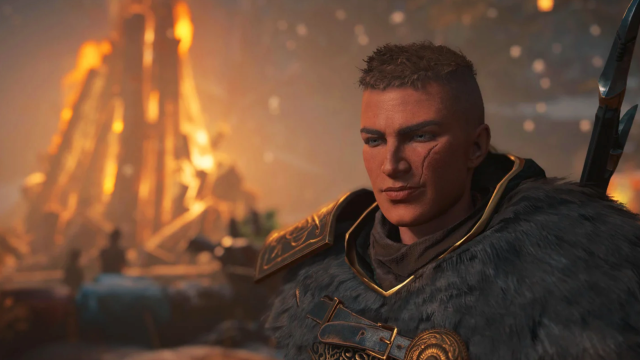
Leave a Reply